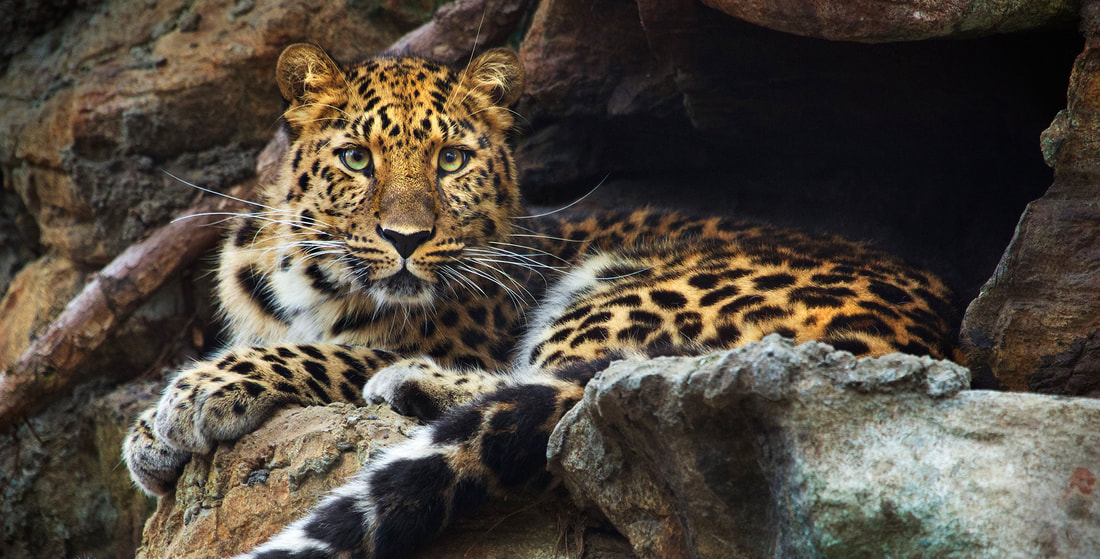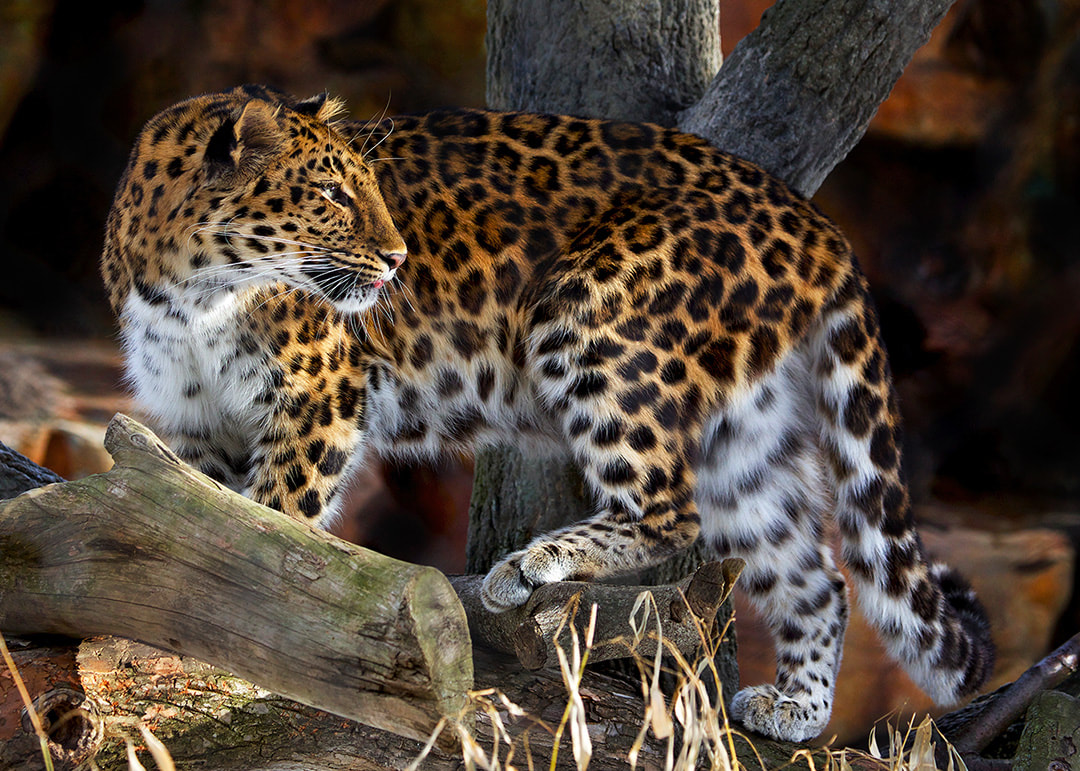Amur Leopard (Panthera pardus orientalis)
|
Physical Description: Amur Leopards can weigh 70 to 105 pounds. Their long legs allow them to leap as far as 19 feet forward and 10 feet up. Their dense fur allows them to hunt in deep snow while remaining warm. The winter coat is a light color and turns more reddish-yellow in the summer. The “spots” on the Amur Leopard are different from other leopard subspecies. They are more widely spaced with thick borders.
Orion, the male Amur Leopard at the zoo displays the wild-type coloration. Kallisto, his sister, is a melanistic Amur Leopard, with a black coloration. Her rosettes are still visible, however only in bright daylight. Habitat: They live in mountainous forests with mixed deciduous and coniferous plants. The climate can vary from season to season, with extremes in both temperature directions. Range: Habitat destruction and over-hunting have reduced the range to about 2,000 square miles in far eastern Russia. Eighty percent of its territory has disappeared in just 13 years. They derive their name, Amur Leopard, from the Amur River Valley which they called home. Diet: They are carnivores who will eat a variety of meats including deer, wild boar, and hare. Lifespan: The Amur Leopard can live 10-15 years in the wild and up to 20 in human care. Social Structure: Most Amur Leopards live alone rather than in families but a few males have been documented to stay with females to help rear the cubs. Females birth litters containing 1 to 4 cubs that leave their mother at 1 ½ to 2 years old. Outside of the mating and raising period, they are a solitary species. Status: Critically Endangered. A recent census estimates that there are 80-100 wild Amur leopards remaining. Connecticut’s Beardsley Zoo is a proud participant in the Amur Leopard Species Survival Plan. Other: These nocturnal big cats are the rarest big cat in the world. The Association of Zoos and Aquariums works to cooperatively manage an ex-situ population though their Species Survival Plan (SSP). You can learn more about SSPs at https://www.aza.org/species-survival-plan-programs?locale=en. |









